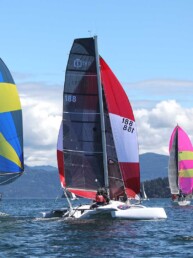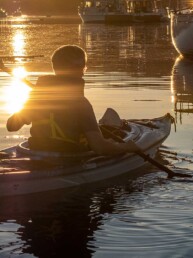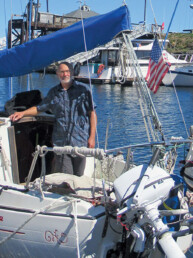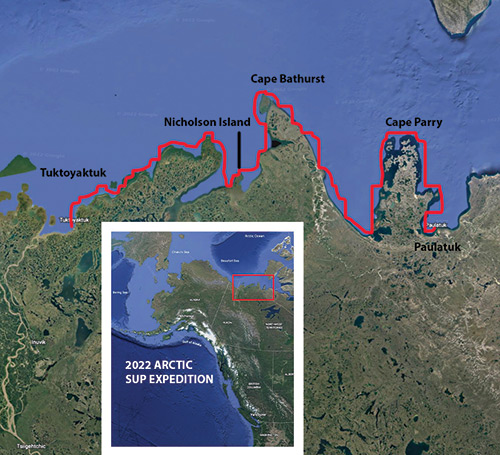
She was surrounded by women. They all sat on the bench at the front of the community hall in the center of Paulatuk in the Inuvik region of Canada’s Northwest Territories. She looked me in the eyes, pausing to take another drag of her cigarette. Her expression was wrinkled into a permanent squint against the relentless Arctic. It was impossible to tell how old she was, though she was clearly a lot older than the others. Her hands were deft, her movements subtle, and the sparkle in her eyes indicated enormous depth and a certain playful skepticism.
She spoke quietly. They all heard her, deferred to her, and silenced themselves as she spoke. Their social discipline was not lost on me. I was raised under the axiom that a person should only speak when they have something of meaning to share, and that ”those who speak most, have the least to say.” This woman clearly had something to say.
She addressed me, her gaze unwavering, with the warm confidence of one who is secure in their community, beliefs, heritage, and experience. She was bold, yet kind; strong, yet unassuming. She asked me, “You came in the canoe, hey?” in that beautiful, lilting, and deeply comforting way that Inuit have. They all waited patiently while I triangulated the answer to her question. I had only been in town for maybe 30 minutes, arriving on my standup paddleboard (SUP) after pulling a 70-mile all-nighter from Cape Parry to complete this leg of the journey.
I had departed Tuktoyaktuk (Tuk) 15 days prior. In 2017, I decided I would like to paddle a SUP through the Northwest Passage. After one false start and loads of training, I began the project this year. Stepping off the beach and paddling alone into the Arctic was the hardest thing I have ever done. Also the most fruitful because the greater the risk, the greater the reward.
As I set out from Tuktoyaktuk, I keenly felt the difference between risk appetite and risk tolerance. I was scared shitless. In July of 2019, I had rolled into Tuk, clearly sporting an appetite for risk… but ultimately paused the expedition to give myself more time to prepare. In July of 2022, my shoreside expedition crew, Scott and Elyn, drove with me into Tuk, I packed up my stuff, and I shoved off. I was in Tuk for under an hour. With the scantest suggestion of a safety net, I went for it — proving that my risk tolerance and preparation was vastly stronger than my first attempt.
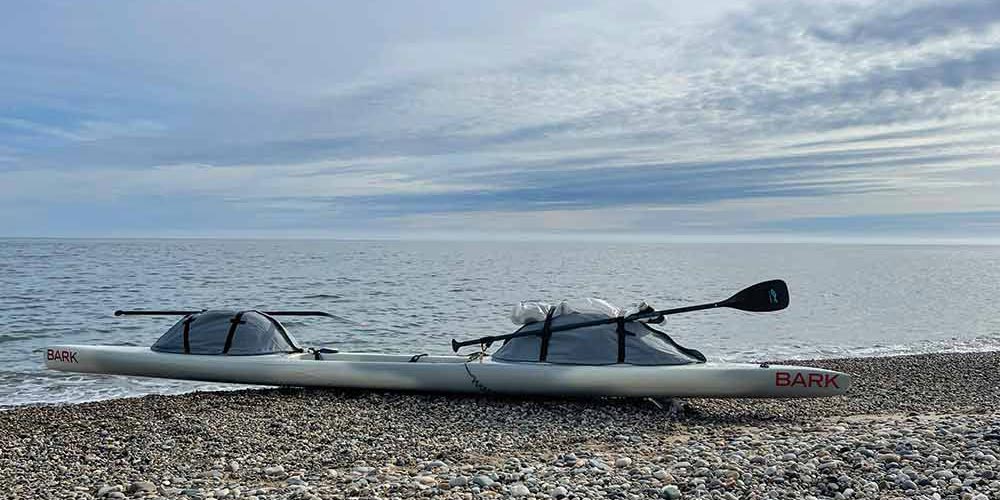
The board was extremely heavy, and I almost pulled myself right over the nose on the first couple of strokes. My kit weighed in at 398 pounds at the start of the journey, including my custom BARK Expedition SUP and myself — I’d be relieved of food and fuel weight, as well as 17 pounds of body mass, in the ensuing 15 days.
It was a beautifully sunny and slightly breezy day, and it took a couple of hours for Tuk to inch below the horizon behind me. Getting comfy with a solo SUP paddling expedition in the Arctic felt like breaking in a new pair of leather boots in those first few days.
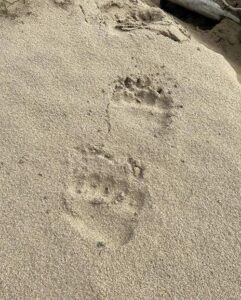
Soon, I was paddling straight into a strong easterly headwind. I battled upwind for as long as I could before posting up on the beach. The terns and sandhill cranes scolded me for a day while I stood by, impatiently working on my Arctic tan, counting bear and wolf tracks, and hoping the wind would shift to a westerly.
When the westerly came, it was stout. On the third and fourth days out, I found myself alone in the Arctic Ocean — well out of sight of land, surfing my board in steep, cold, crumbling seas with the board completely submerged. I hadn’t planned to be a submariner. Whatever the craft, mariners are tested by how well they accept the unexpected and keep moving forward. I stood in the footwells of the board with water halfway up my calves for two days. It added a certain spice to the already mind-altering undertaking. As it turns out, submarines are quite stable, and pretty fast too.
Late on the fourth day, wind and current created a jumbled sea state. I was on my knees and paddling hard to round a point. I had just seen my first caribou and beluga. All the while, I had been keeping an eye on a cigar-shaped front approaching from the west. I watched the showers that developed along the cloud front. Just short of my daily goal, the wind suddenly veered northerly and started gusting 25 to 30 knots. Resistance was futile. I allowed the conditions to guide me to shore.
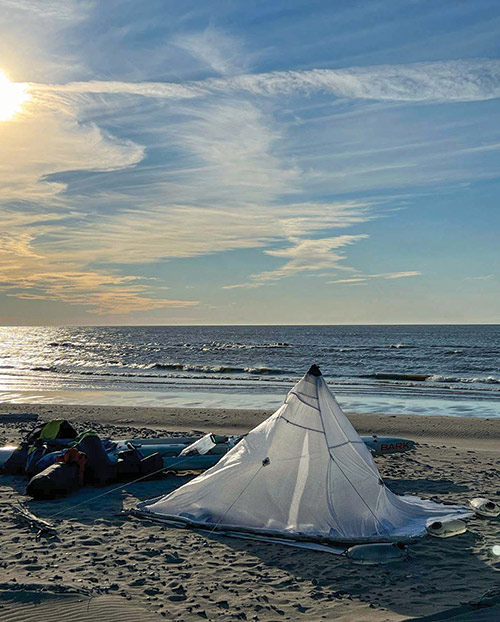
I battled with my tent to get it pitched. Every time I poked a stake into the permafrost, a gust would come, flog the tent, and yank it out. I finally piled all my gear on top of the flogging tent, and got it staked out before sliding the pole in to stand it up. It was a memorable blow. For the rest of the trip, I warily eyed the horizon during each crossing. I had learned how quickly things can happen in the Arctic.
My third significant crossing brought me from Tuk Peninsula to Nicholson Island. I was running low on water, and knew I could find some 15 miles across the bay. But 15 might as well be 50 when you can’t see anything. I had already paddled almost 45 miles. Though the previous cold front was on my mind, the horizon looked friendly enough so I went for it. I quickly started passing large floats of brash ice and “bergy bits” — smaller pieces of the winter pack ice that was breaking up farther to the east and north. The sounds of lapping waves around the ice bits, coupled with the beluga whistles and squeaks were my soundtrack. The weather held. That night, I found water.
In the Arctic, you are forced to accept your insignificance. You must exist in a space of brutal honesty and humility. If there are obstructions in your psyche, nature will reveal and grind away at them. Ignorance of this fact has crushed many expeditions. The tiniest decisions invite dire consequences, and traveling alone amplifies these realities. My body was enduring the physical challenges of an Arctic journey, but those first days showed me that it would take all of my faculties to find my way. The charts are inaccurate and the compass is increasingly useless as you near the poles. Thick fog formed rapidly, and the low points of tundra slipped away over the horizon very quickly. I had no choice but to dig deeper for navigational clues.
When you move into the vastness, you learn to ask for the way and promise to do the work needed to follow the way. The way opens, always. However, you must have gratitude, and you must do the work, without fail. Over time, a person becomes attuned to the tiniest impulses that come from within, and the smallest external clues. It is very important to follow these impulses — they can save your life, because they always open toward the path.
I felt great joy in discovering old hunting camps — places with good water to drink and as many bones on the beach as rocks. I found them following my internal compass, and it was also in this way I avoided becoming just another pile of sun-bleached bones.
I shoved off from Nicholson Island and picked my way through the fog and side chop to make landfall just south of Cape Bathurst. I experienced the optical illusion called “Looming” during that crossing — sandy banks of the shoreline several miles behind popped back up, after losing sight of them an hour earlier. It was briefly disorienting. Later, as I neared my goal, I found the sandbars guarding the beach to be like a corn maze at Halloween. That night, I broke my fin as I pulled up onto the beach. I was down to my spare fin, and still had another 200-plus miles to go. I was not happy with this development.
The next day, I paddled along a crumbling bank of permafrost. Cape Bathurst is reportedly losing 20 feet of shoreline every year to melting and erosion. The water looked like chocolate milk. Paddling in the lee, the absence of waves crashing was overwhelming — I had grown used to the roar and chaos. With the slightest whispers of breeze in my ear. I paddled close to the bank to get some relief from the building easterly. I watched the cat’s paws tickling the surface just to my left as I wound my way through the shallows to land at the tip of Cape Bathurst.
This was the northernmost point of my expedition this summer — a latitude of 70 degrees north. The situation and exposure were incredible. Muskoxen and caribou tracks were literally everywhere. My tent smelled like a barn inside. I walked the tundra for hours, drinking in the solitude and exposure like it was a medicine. I found a melted-out grave. He died sometime around 1915. His wooden casket sitting on ice, and exposed to the arctic elements. A pile of crumbly permafrost spread across the top like cake frosting. The grave marker had tipped over. I stood it back up and looked at it for a while, before deciding to look for water someplace else.

I found a little water in a narrow crack near the edge of the permafrost. There was enough in a small puddle to fill a 6-liter bladder. That was the last water I would find until Cape Parry 150 miles later. Water is wealth in the Arctic.
I spent two heavenly days there on the tip of the Cape surrounded by old bowhead whale bones, waiting and watching as the easterly brought the ice in close. I worried that it would pack in and trap me there. The ice came within 100 yards of shore, and the larger bergs grounded just offshore. There was a constant cacophony. The ice sounded like thunder; the wind like a distant waterfall; the birds calling overhead, always keeping a wary eye on me. There were bear tracks in abundance. I have never been so happy in all my life. On the edge of the world. I felt enormously powerful, yet delicate like a tundra flower. You can be both.
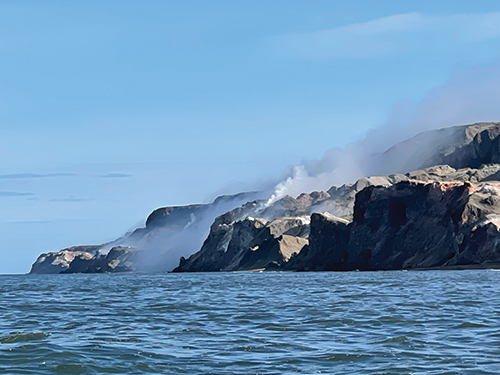
Leaving Bathurst, I stayed close to shore to weave my way between bergy bits. I passed the Smoking Hills, an area where subsurface shale is always burning. The air quality was poor with drifting, acrid smoke. The place had a martian vibe. I passed a big brown bear cruising the beach for snacks. It trolled along and passed dead downwind of me. The instant it caught a whiff of me, it exploded into a furious run down the beach. I worried a little less about bears after that.
That night, I camped about a mile away from a Hudson’s Bay Company outpost on a huge delta below a Distant Early Warning Line (Dew Line) station. Situated about every 50 nautical miles across the entire Arctic, Dew Line radar stations are a functioning relic of the Cold War era, set up to warn of Soviet invasion by air, land, or sea. Both the Dew Line station and the Hudson’s Bay facility looked alien. The Hudson’s Bay outpost made me think about the de facto slavery of the Inuit. I had no desire to visit that place.
The next two days were a mad-dash to find water. As I ate and drank less, it was becoming more difficult to keep warm while I wasn’t paddling. The crossing to the Cape Parry peninsula was the largest crossing I made. I had grown more comfortable with the risks. I recognized them and their magnitude, yet I was somehow more capable of plowing through the discomfort. About halfway across, two bowhead whales crossed close in front of me. Slowly. They were curious but cautious — like the belugas, just a whole lot bigger. I stopped paddling and watched them pass.
I landed in heavy fog. No fresh water anywhere near there, it was like a desert. Thirsty and hungry, I paddled another 40 miles to Cape Parry. That day brought so much — sea lions, whales, fog, dehydration, headwinds, steep and choppy seas. All day, I paddled with the Arctic gaping wide to my left. I’d be lost forever if something happened and I drifted over the horizon. It would have been so easy to just disappear. So easy.
Cape Parry was my last camp before paddling into Paulatuk. I spent two very windy and clear days looking for water and waiting for a window. Sporting my orange crocs and a shotgun over my shoulder, I walked out onto the land. The distant Arctic Ocean shone the deepest blue. Bear tracks mingled with the wolf tracks. I walked a few miles. I found a cairn. The wind and sea were the only voices. I meandered this way and that, asking the way to a lake or other water source. I began to notice the wildlife tracks all lining up like electronic induction lines. I followed them in a long arc to a jewel of a lake nestled high on a ridge. For the first time since I left Tuk, I was able to fill up my water bags on this last full day before paddling into Paulatuk. It felt decadent to have so much water. I could drink as much of it as I wanted. I was a wealthy man.
A weather window opened and I departed Cape Parry at 7:00 p.m. The board performed incredibly well — the sea around Cape Parry can get rowdy. After about 30 miles, the swell became organized and glassy, and I enjoyed another 40 miles of beautiful bumps. The bright blue color of the water in the dusky twilight of an Arctic night was like nothing I have ever seen. The belugas made the water glow brightly. I arrived in Paulatuk around 11:00 the next morning after a distance of around 70 nautical miles. 420 total since Tuktoyaktuk.
As I paddled into Paulatuk, population 265, I took it slowly. I wanted to avoid being demanding, offensive, or rude in my approach. The villages along the Arctic coast are close to shore, and I didn’t want to pull up in someone’s front yard. As I chose a spot to land, I noticed a 4-wheeler rapidly approaching. The nose of my board had just kissed the grass between two skiffs when the man driving stopped right in front of me. With obvious sincerity and great solemnity he said, “Hi, I’m Joe. And on behalf of Paulatuk, I welcome you.”
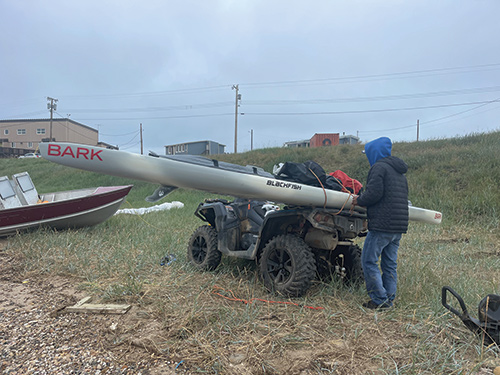
I had not seen a human face in 15 days. No boats or planes. Despite all that solitude, somehow, I found re-entry into that social setting to be easy. In Paulatuk, I was greeted by people who navigate from a deeper place, and have done so for a very, very long time. I have always appreciated the resonance I feel with people who thrive in harsh environments like the Arctic. Character and resolve as tough as thick old oiled leather, but smooth like a river rock. Resilient. When you are reminded so forcefully and relentlessly of the ephemeral and delicate nature of life, the result is profound gratitude.
These thoughts swirled around in my head after the old woman asked me if I was the one who arrived by canoe. I could see in that woman’s eyes a respect for my chosen solitude, it warmed me thoroughly. I held her eyes and, after quickly deciding that a canoe isn’t so different from my SUP, answered, “Yes, I did.” Her eyes shot open and her mouth formed a large O as she slowly said “Ooh!” Recognition passed silently between us. I stood there in my drysuit; soggy, hungry, tired, and also humbled and honored she had noticed my arrival.
Her next questions were “Where did you paddle from?” and “How long did it take?” At each reply, her eyes got bigger and was accompanied by a longer “OOOH!!” Lastly, she asked, “Alone?” To which I replied “Yes, alone.” After the briefest pause, she gave a slower, deeper “ooOOOoh.” We quietly regarded one another for a moment. In an instant, the younger women began peppering me with questions. Afterward, Joe helped me carry my gear upstairs to a room in the bunkhouse/hotel. Then, I ate everything and slept hard for a while.
Unlike my arrival in Paulatuk, re-entry into ‘society’ is always more challenging. There is a core misalignment between society and nature. Back south, if I tripped on a street curb and busted my leg, I’d soon have a whack of well-trained medics there to save me from myself. Water runs from a pipe sticking out of the wall. You can flush away your poop and not worry about a bear finding it interesting. Food is piled up in foul heaps at the store. The stench of entitlement is strong. Surprises are few, and are usually met with bitter protest. Change is the enemy, instead of the dear old friend it really is.
In Paulatuk, Joe told me a story of a time his snowmobile broke down while he was out hunting. He was forced to walk almost 30 miles in the cold and dark of winter to get back home. He lost parts of his foot, and some feeling in all his toes. I loved his matter-of-fact telling of the story. I thought of that story recently while I watched a woman freak out that her latté was made incorrectly. I adore the way the Arctic reveals the flaws of a way of thinking, and guides a person toward a higher standard. This is the allure of well-conceived expeditions, at least for me.

The most important thing I learned this summer — to my own deep shame — was the arrogance and pointlessness of my original goal of paddling through the Northwest Passage in a single season. As I paddled into the fog early in the journey, it hit me. Why rush? I asked myself, “When I am dead, what joy will I derive from having blasted through the Northwest Passage in one season?” Of what value is notoriety or recognition for doing a thing that is beyond the imagination of most people anyway? I decided it is much better to go slower, drink in the experience, and concentrate on forming deeper connections with the natural world and the ancestors, while learning as much as possible. As I noodled my way through the fog, I resolved to spread my transit of the Northwest Passage out over three to four summers. Making that decision was the biggest relief of my life. It felt right. Good navigation comes in many forms, and that single decision instantly freed me to enjoy what I was doing, without added pressure.
My thoughts and dreams are filled with the Arctic. Of breezes over the tundra, bobbing cotton heads, the grinding rumble of ice in the distance, popcorn-like exhales of beluga and their calls echoing through my board, the sticky smell of muskoxen, and the sandhill cranes raising the alarm when I approached a bit of water they felt provincial about. These experiences, and so many others, calibrated my internal compass.
On my final night of paddling, I found grace and acceptance that has stayed with me. I learned to be unapologetic about my presence. I learned to always ask first, to be more genuinely grateful, to listen to my smallest voices. I learned that it is not mere luxury to connect with, and call upon, our ancestors — it is a requirement. After a lifetime outdoors and on the water, it feels like at last I learned to navigate.
Karl Krüger is one of the Pacific Northwest’s premier adventurers. He makes his home in the San Juan Islands, and plans to return to the Arctic in 2023. Learn more at karlkrugerofficial.com

Karl Krüger
Karl Krüger is one of the best known adventurers in the Pacific Northwest and beyond. He's the first and only person to finish Race to Alaska on a standup paddleboard, and is now preparing to SUP the Northwest Passage. He's the captain of the steel cutter Ocean Watch and runs a variety of expedition charters with his business Krüger Escapes.

